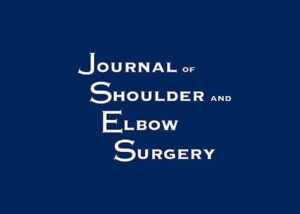
Authors:
Philip-C Nolte, Jon W Miles, Kira K Tanghe, Alex W Brady, Kaare S Midtgaard, Joe D Cooper, Lucca Lacheta, Matthew T Provencher, Peter J Millett
Abstract:
Background: A medialized center of rotation (COR) in reverse total shoulder arthroplasty (RTSA) comes with limitations such as scapular notching and reduced range of motion. To mitigate these effects, lateralization and inferiorization of the COR are performed, but may adversely affect deltoid muscle force. The study purposes were to measure the effect of RTSA with varying glenosphere configurations on (1) the COR and (2) deltoid force compared with intact shoulders and shoulders with massive posterosuperior rotator cuff tears (PS-RCT). We hypothesized that the highest deltoid forces would occur in shoulders with PS-RCT, and that RTSA would lead to a decrease in required forces that is further minimized with lateralization and inferiorization of the COR but still higher compared with native shoulders with an intact rotator cuff.
Methods: In this study, 8 cadaveric shoulders were dissected leaving only the rotator cuff muscles and capsule intact. A custom apparatus incorporating motion capture and a dynamic tensile testing machine to measure the changes in COR and deltoid forces while simultaneously recording glenohumeral abduction was designed. Five consecutive testing states were tested: (1) intact shoulder, (2) PS-RCT, (3) RTSA with standard glenosphere, (4) RTSA with 4 mm lateralized glenosphere, and (5) RTSA with 2.5 mm inferiorized glenosphere. Statistical Parametric Mapping was used to analyze the deltoid force as a function of the abduction angle. One-way repeated-measures within-specimens analysis of variance was conducted, followed by post hoc t-tests for pairwise comparisons between the states.
Results: All RTSA configurations shifted the COR medially and inferiorly with respect to native (standard: 4.2 ± 2.1 mm, 19.7 ± 3.6 mm; 4 mm lateralized: 3.9 ± 1.2 mm, 16.0 ± 1.8; 2.5 mm inferiorized: 6.9 ± 0.9 mm, 18.9 ± 1.7 mm). Analysis of variance showed a significant effect of specimen state on deltoid force across all abduction angles. Of the 10 paired t-test comparisons made between states, only 3 showed significant differences: (1) intact shoulders necessitated significantly lower deltoid force than specimens with PS-RCT below 42° abduction, (2) RTSAs with standard glenospheres required significantly lower deltoid force than RTSA with 4 mm lateralized glenospheres above 34° abduction, and (3) RTSAs with 2.5 mm inferiorized glenospheres had significantly lower deltoid force than RTSA with 4 mm of glenosphere lateralization at higher abduction angles.
Conclusions: RTSA with a 2.5 mm inferiorized glenosphere and no additional lateralization resulted in less deltoid force to abduct the arm compared with 4 mm lateralized glenospheres. Therefore, when aiming to mitigate downsides of a medialized COR, an inferiorized glenosphere may be preferable in terms of its effect on deltoid force.
For the complete study: The effect of glenosphere lateralization and inferiorization on deltoid force in reverse total shoulder arthroplasty